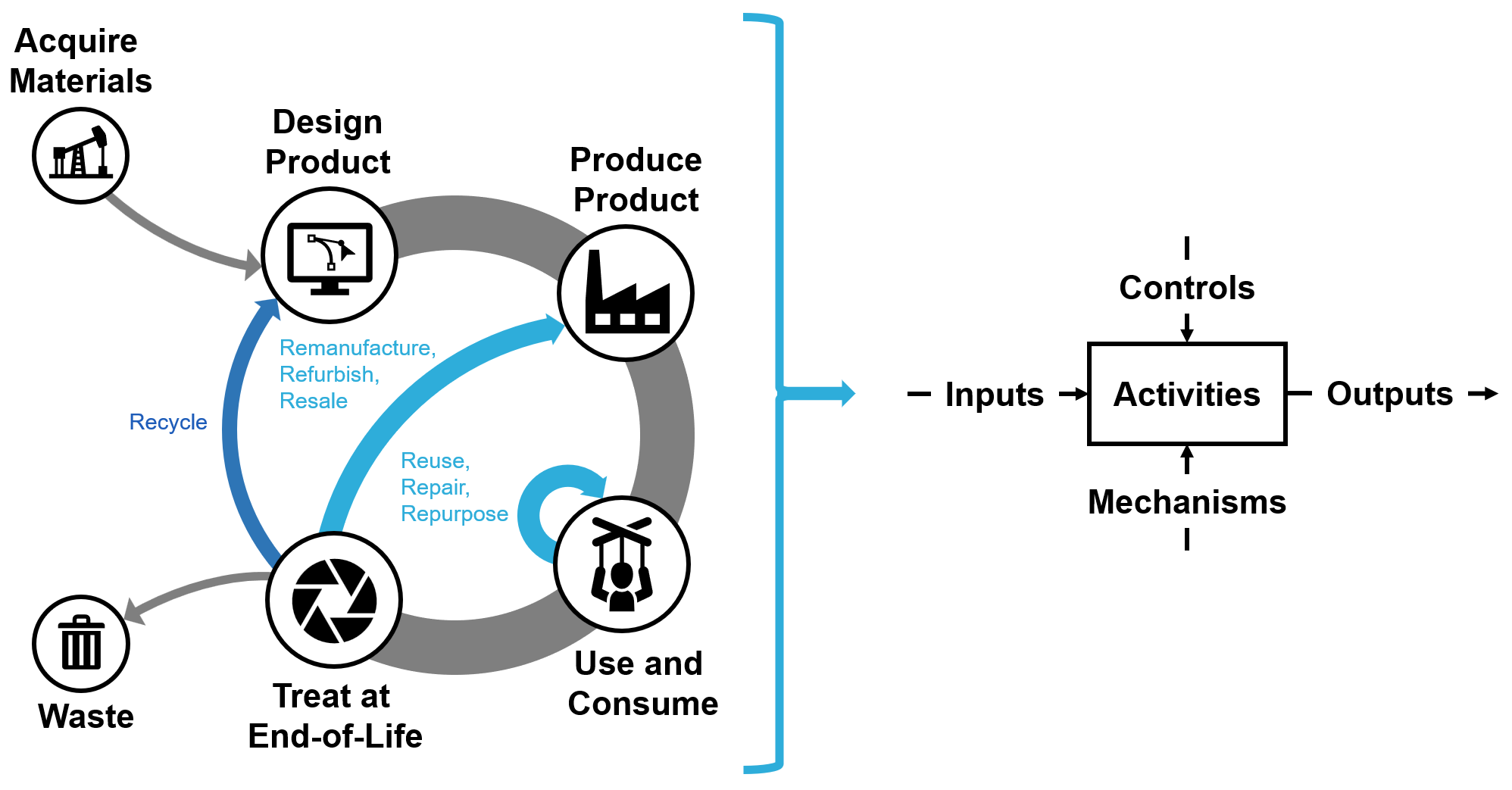Reference Functional Model for Production in a Circular Economy
Access the Production in a Circular Economy Model

The Production in a Circular Economy (CE) Model is a reference model of the activities and systems involved in a product’s life cycle within a circular economy. A circular economy keeps materials and products out of unwanted sinks such as landfills and the environment through a variety of processes including (but not limited to), reuse, recycling and repair. Circular approaches enable stakeholders, including designers, suppliers, manufacturers, consumers, and end-of-life treatment providers, to create and consume products in ways that promote value retention and resource efficiency. A key need for stakeholders in a CE is to leverage data from upstream and downstream life cycle stages to inform decisions both initially and iteratively. Using the IDEF0 functional modeling method, the reference model defines relevant inputs, outputs, controls, and mechanisms for each activity, providing examples that are relevant for a circular economy. It provides a baseline scenario that is relevant for stakeholders across product development and supply chain, including business strategists, material suppliers, designers, manufacturers, consumers, and recovers/recyclers. The model is also available as downloadable files.
Users of the reference model can include CE researchers, product designers, and standards development bodies, among others. For example, the model can serve as a resource for designers to:
- Identify differences in data needs and considerations for Circular Product Design (CPD), compared to traditional product design
- Identify areas within CPD that require further development of tools, measurement methods, or standards
- Determine the data collection necessary to guide design decisions and assess their downstream impacts
- Plan for information tracking throughout a product’s life cycle
Others can use the model to:
- Determine possible avenues for their product’s end-of-life treatment
- Communicate with various stakeholders in the product development process
- Identify areas where resource recovery can be improved
Related Publications
Contact
For more information, contact:
-
(301) 975-8286

